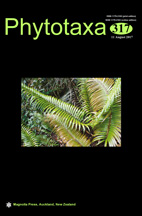Abstract
Aristolochia Linnaeus (1753: 960) (Aristolochiaceae) comprises about 500 species. The genus has worldwide distribution (Wanke et al. 2006). Recent findings of Aristolochia (Phuphathanaphong 2006, Xu et al. 2011, Huong et al. 2014, Do et al. 2015, Wu et al. 2015), together with the previous treatments for the Flora of Thailand (Phuphathanaphong 1987), the Flora of Vietnam (Pham 2000) and the Flora of China (Huang et al. 2003) confirmed the Thai & Indo-Chinese floristic region as a center of diversity for Aristolochia, with currently about 90 species. A high degree of endemism is found for specific countries (Huang et al. 2003, Phuphathanaphong 2006). However, the delimitation and taxonomic status of some species are still unclear due to limited access to specimen databases, especially for the type specimens in those countries. Notably, recent studies have significantly revised the taxonomic status of several previously described Aristolochia species when herbarium materials from multiple countries in the region were consulted (Do et al. 2014, Do 2016, Zu et al. 2016). On the basis of the examination of the protologue, the type specimens, and recent collections from the herbaria BKF, C, GXMI, HITBC, IBSC, KUN, PE and PEM, we conclude that Aristolochia longeracemosa B. Hansen & Leena Phuphathanaphong (1999: 557), described from collections made in northern Thailand, is conspecific with A. chlamydophylla C.Y. Wu ex S. M. Hwang (1981: 223) from southern China. Hence, we here propose the former as a new synonym of the latter. A detailed comparison of the morphological characters and habitat of these two species is provided.

